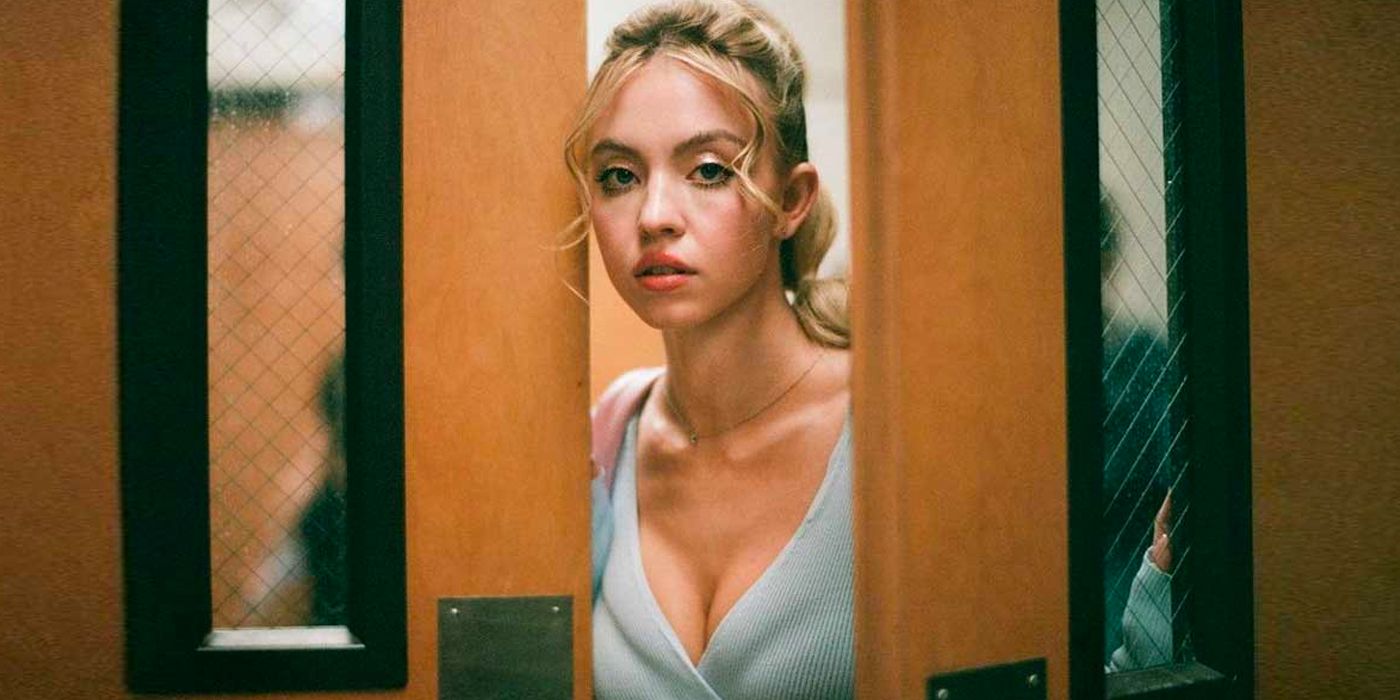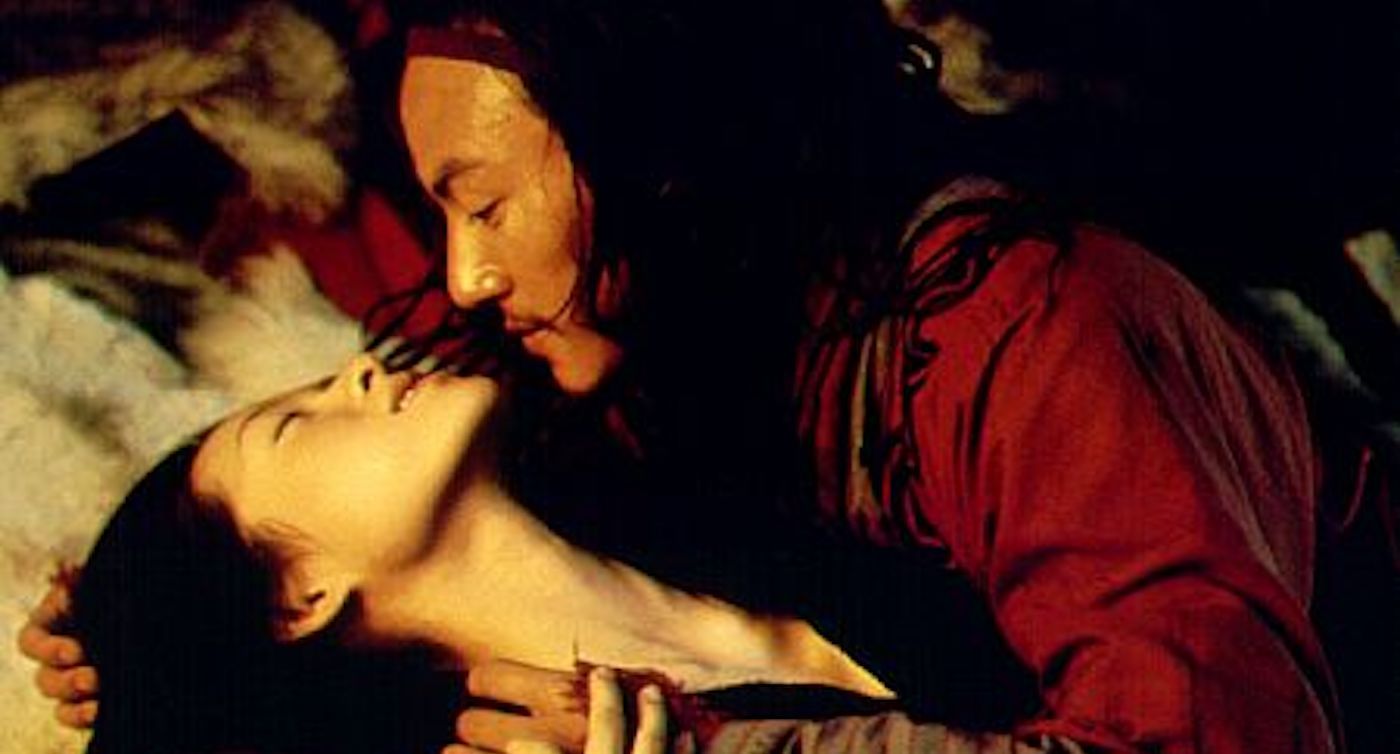“Everyone is beautiful and no one is horny.” If you’re in any way interested in movies and tend to spend a considerable amount of time online, chances are that you have come across this Blood Knife article penned by RS Benedict. In a nutshell, the piece discusses how most action films and blockbusters nowadays show actors and actresses at the peak of their physical form, dedicating long shots to their toned bodies, but avoid depictions of sex and sexual expression in general. And, indeed, in order to make movies more appealing to a wider audience, including parents and children, studios have been making them as chaste as they possibly can. Most theatrical releases nowadays are PG-13 flicks with hardly any mentions of sex whatsoever. And, yet, the debate about the prevalence of sex scenes has been more heated than ever.
Most recently, the debate regained traction when You star Penn Badgley said he was against appearing on sex scenes out of respect for his wife. Of course, Badgley, as a professional, is entitled to decide which kinds of scenes he’s comfortable participating in, but his decision to give up on fictional sex led to a wider debate online about the necessity of sex scenes in TV and movies that culminated in some misguided tweeters all but asking for the return of the Hays Code. This isn’t the first time sex scenes have come under fire. However, in an era in which sex in movies has become so rare, it begs the question of where this debate is coming from. Why on Earth are we so fixated on sex scenes? Where is the discourse coming from and what impacts does it have in our current media landscape?
Teens' Experiences With Sex Aren't Accurately Reflected in Movies and TV
Scrolling through social media for takes on the whole sex scene discourse, it doesn’t take long for anyone to notice that the more vocal posters on the subject usually belong to a younger demographic. This isn’t necessarily a surprise. We all remember how awkward it could be to watch certain movies with our parents and other adults when we were kids, and this experience sure left many of us wishing that sex scenes weren’t a thing. However, when it comes to today’s teens and young adults, there might be something else besides embarrassment and discomfort with actors getting their fake freak on.
According to 2022 research, teenagers all around the globe are having less sex than their counterparts from previous generations. Data collected from kids ranging from 14 to 19 years old show that the number of adolescents that claim to engage in no kind of sexual activity, including masturbation, rose from 28.8% to 44.2% among boys and 49.5% to 74% among girls between the years of 2009 and 2018.
This data not only shows that interest in sex is declining among kids but also points to a disconnect between teenagers' and young adults’ actual sex lives and how it is portrayed in the media. You see, though movies these days have become largely sexless in order to appeal to a wider audience, television seems to be doubling down on sex scenes, particularly among teenage characters. The rise of cable and, subsequently, streaming services ushered in a new era for TV, in which executives and showrunners could let go of limitations such as parental ratings and reach wider demographics. Audience clustering means that shows can now be produced with more and more specific kinds of viewers in mind. This, in turn, means that there is more room for experimentation and risk-taking. Among those risks are more realistic and even graphic depictions of sex.
This isn’t necessarily a problem, but it does cause some discomfort when we look at shows aimed at younger audiences that have teenage characters as protagonists. Think Netflix’s Elite or HBO’s Euphoria, for instance. Though they’re having less and less sex, teenagers see themselves on television engaging in frequent and risky sexual behavior, sometimes even with adults, and fail to identify with what is being shown. Furthermore, being online, kids have more access to information surrounding media consumption and how it impacts society. Namely, they are more aware of how the sexualization of fictionalized teens contributes to their own sexualization by adults.
There’s a Growing Concern with Sexual Misconduct, Both on Screen and Behind the Scenes
Another aspect of the growing discourse around sex scenes that seems to have stemmed from television surrounds the eroticized and excessive portrayal of sexual violence in media. This became a larger problem during the time Game of Thrones was airing on HBO. The rape of Sansa Stark (Sophie Turner), in Season 5, an instance of sexual violence that wasn’t even in George R.R. Martin’s books, was the last straw for a show that was already coming under fire for how often it portrayed gratuitous female nudity and abuse. Ever since then, shows and movies that insist on depicting rape have been coming under scrutiny, and it’s pretty hard to debate whether this is a positive outcome. Most of these scenes add very little to the plot and overall atmosphere of the story that is being told, seeming to exist solely for shock value or to elicit arousal in some viewers. However, we must be careful to separate our criticism of the portrayal of sexual violence in media from a condemnation of sex scenes in general.
But sexual violence and misconduct aren’t a problem just in the realm of fiction. Ever since the rise of the #MeToo movement, numerous stories of actors and, most frequently, actresses that were assaulted and harassed by co-workers while filming sex scenes have come to light. Actresses Léa Seydoux and Adèle Exarchopoulos, the stars of Blue Is the Warmest Color, came forward in 2013 against director Abdellatif Kechiche for making them feel humiliated during the movie’s many explicit sex scenes. Actress Maria Schneider used similar terms to describe her treatment by co-star Marlon Brando and director Bernardo Bertolucci during the shooting of Last Tango in Paris, particularly during the now infamous butter scene. The list goes on. Though intimacy coordinators have become more commonplace on movie and TV sets ever since these stories came to light, there is still some suspicion whenever we see a sex scene that an actor might have felt less than comfortable during the shooting.
The Absence of Sex Scenes Makes Sex Scenes More Noticeable
Another possible explanation for why there is such a heated debate around sex scenes in an era in which they aren’t even that prevalent is the absence of sex scenes themselves. After all, the fact that we rarely see characters having sex or even expressing any form of sexual desire on screen means that depictions of sexuality become more prominent on the rare occasions in which they appear. Furthermore, the fact that so many stories - sometimes, even love stories - are being told in movies without room for sex has sold many viewers into the belief that sex scenes are largely unnecessary to stories in general.
This, however, is not true. Many sex scenes are an integral part of the plot. Take, for instance, the scenes between Lo (Chang Chen) and Jen (Zhang Ziyi) in Ang Lee’s Crouching Tiger, Hidden Dragon. The recklessness and abandon shown by the characters as they are having sex stands in sharp contrast with the chasteness of the love story of Li Mu Bai (Chow Yun-Fat) and Shu Lien (Michelle Yeoh). Though not exactly the most tasteful of scenes, when Mystique (Jennifer Lawrence) tries to seduce Magneto (Michael Fassbender) in X-Men: First Class, the scene is meant to show her overreliance on her shapeshifting abilities and his acceptance of her original form.
But even when sex scenes aren’t necessary for plot advancement, sex can sometimes be added to the story as a means of building atmosphere. It is hard to imagine any movie directed by Wong Kar-Wai without the sexual tension that makes them such interesting watches. And how do you even convey the pleasure characters derive from the fusion of the organic and the machine in Crimes of the Future and other David Cronenberg projects without sex?
Furthermore, it is important to be careful with how the critique of sex scenes in movies is framed. That misinformed request for the return of the Hays Code is a great example of how this discourse can be weaponized by much shadier agents than teens on the internet. Let’s not forget that the Hays Code didn’t only forbid actors from simulating sex on camera, it also barred depictions of interracial and homosexual love. In an era in which same-sex couples are finally beginning to be depicted in media as loving and healthy, this anti-sex scene stance could be used to hinder these advances in representation.



.jpeg)
